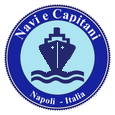INFORMAZIONI
STORICHE
Questa
corazzata e la gemella DUILIO, erano soltanto una versione
migliorata delle tre precedenti unità della classe CAVOUR.
Su queste unità vi era una di una migliore distribuzione e
di una maggiore potenza dell’artiglieria secondaria, ma ciò
nonostante a differenza delle stesse unità appartenenti alle
altre diverse marine militari del mondo, avevano ancora una cintura
corazzata di spessore insufficiente, in pratica avevano lo stesso
difetto delle unità della classe precedente. Le due navi, progettate
durante la guerra italo turca, ed impostate e costruite dopo qualche
tempo con una certa lentezza, alla loro entrata in servizio già
non erano più delle navi all’avanguardia.
Comunque risultavano solide, ben costruite, stabili e di linea armoniosa.
Durante la loro non breve carriera, furono sottoposte solo a normali
cicli di manutenzione, non ebbero infatti che piccolissime modifiche,
interessanti più che altro alcune apparecchiature o armi antiaeree.
Sul finire della guerra, nel 1918, la Duilio venne dotata di un grosso
verricello e delle attrezzature necessarie per la manovra di un pallone
frenato, che doveva servire in via sperimentale per l’osservazione
del tiro e per aumentare le possibilità di scoprire il nemico
a maggiore distanza. Fu comunque di un esperimento di breve durata.
Nel 1925, fu imbarcato un idrovolante da ricognizione M.18, che sistemato
sul cielo della torre centrale, in apposita sella brandeggiabile per
poter orientare il velivolo secondo la direzione del vento, veniva
issato a bordo o messo a mare a mezzo dell’albero di carico.
Nel 1926, infine, su ambedue le navi fu installata, a prora sul lato
sinistro del castello, una catapulta per il lancio dell’idrovolante.
Dal 08.04.1937 al 20.10.1940 fu sottoposta a lavori di ammodernamento
che comportarono un aumento nelle dimensioni, una trasformazione dell'apparato
propulsivo e dell'armamento come di seguito :Dislocamento a Pieno
carico 28.882,4 tonn - lunghezza fuori tutto 186,90 m - larghezza
massima 28,0 m - immersione media 10,362 m.
ARMAMENTO : 10 cannoni da 320/43,8 mm. - 12 cannoni da 135/45
mm. - 10 cannoni da 90/50 mm. a.a. – 15 mitragliere da 37/54
mm. a.a. – 16 mitragliere da 20/65 a.a.
APPARATO MOTORE : 8 caldaie a tubi d’acqua tipo Yarrow
subverticali con surriscaldatori - 2 gruppi di turbine Belluzzo,
con riduttori - 2 eliche tripale. Con una potenza massima alle
prove di 87.000 Hp e velocita di 27,0 kn.
La Doria, rimasta ai lavori fino al 1949, fu sede del Comando in Capo
delle Forze Navali dal 10 novembre 1949 fino al 9 dicembre 1950 e
dal 9 marzo 1951 al maggio del 1953.
Durante le attività di serviziopartecipò a numerose
esercitazioni con le altre unità nazionali e alleate, ed alle
crociere annuali. Successivamente al 1953 rimase a Taranto per l’addestramento
dei cannonieri e di altri specialisti.
Il 16 settembre 1956 fu posta in disarmo e dal 1° novembre 1956
fu radiata con decreto de 3 settembre 1956. Successivamente rimorchiata
a La Spezia per la demolizione.
I
dati e le informazioni sono stati ricavati dal sito del Ministero
della difesa alla sezione Marina Militare Italiana
e dal sito www.modellismo-navale.it
HISTORICAL
INFO
This
battleship and sister DUILIO , were just an improved version
of the previous three units of the class CAVOUR. On these units,
there was a better distribution and greater power of artillery secondary,
but nonetheless a difference of the same units belonging to various
other navies of the world, still had a belt armor thick enough, in
practice it had same lack of unity of the previous class. The two
vessels, designed during the war between Italy and Turkey, and set
and built after some time with some slowness, their entering the service
were already more advanced vessels.
However, were solid, well built, stable and harmonious line.
While they are not short career, they were subject only to normal
maintenance cycles, were not in fact that very small changes, more
interesting than some of the equipment or antiaircraft weapons. At
the end of the war in 1918, Duilio was equipped with a large winch
and equipment necessary for the operation of a balloon, which was
to serve as an experiment to observe the shooting and to increase
the chances of discovering the enemy greater distance. However, it
was an experiment of short duration.
In 1925, he was aboard a seaplane reconnaissance M.18, who settled
on the sky of the central tower, in a special swivel seat to steer
the plane in the direction of the wind, was hoisted on board or put
to sea by tree load.
In 1926, finally, on both ships was installed at the bow on the left
side of the castle, a catapult to launch dell'idrovolante.
From 08.04.1937 to 20.10.1940 underwent a complete renovation that
included an increase in size, a transformation of the propulsion and
armament, as follows: 28,882.4 tons full load displacement - overall
length of 186.90 m - maximum width of 28.0 m - average draft 10.362
m.
Armament: 10 guns 320/43, 8 mm. - 135/45 12 mm cannons. - 10 90/50
mm guns. a.a. - 15 37/54 mm guns. a.a. - 16 guns a.a. 20/65
Engines: 8 type water tube boilers with superheaters subvertical Yarrow
- Belluzzo two groups of turbines with gearboxes - 2 three-bladed
propellers. With a maximum power tests of 87,000 HP and speed of 27.0
knots.
The Doria, the work remained until 1949, was the site of the Command
in Chief of the Naval Forces from 10 November 1949 until 9 December
1950 and March 9, 1951 to May 1953.
During the activities of a number of exercises serviziopartecipò
with other national and allied units, and the annual cruise. After
1953 remained in Taranto for the training of gunners and other specialists.
On September 16, 1956 and was laid up from November 1 1956 radiated
by a decree of 3 September 1956. Later towed to La Spezia for scrapping.
Data
and information were obtained from the website of the Ministry of
Defense in section Royal Italian Navy, and from thr site www.modellismo-navale.it

